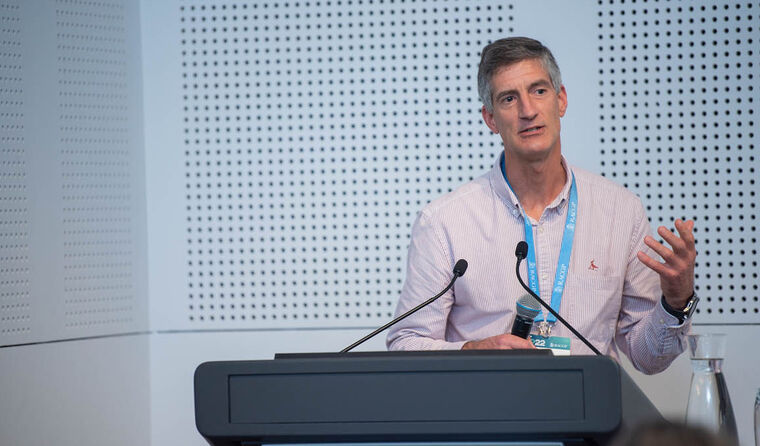News
New resources aim to get GPs and patients on the same page
The ‘first do no harm’ guide aims to improve therapeutic relationships, so patients get ‘maximum value’ from GPs.
 The 'First do no harm' guide uses a traffic light system of recommendations to be used in general practice consultations.
The 'First do no harm' guide uses a traffic light system of recommendations to be used in general practice consultations.
A growing understanding that overdiagnosis, interventions with insufficient evidence and overused tests can all lead to patient harm, wasted resources and misunderstandings around health literacy, has led to a new RACGP ‘living resource’ to help facilitate shared decisions about health.
First do no harm: A guide to choosing wisely in general practice was officially launched at GP22 on Friday 25 November by co-Chairs of the Expert Steering Group, Professor Mark Morgan and Dr Michael Tam.
‘As much as anything else [in clinical practice], gathering information in a succinct, easy-to-see way around particular topics is important,’ Professor Morgan told newsGP.
‘It also helps with respect to conversations – it provides information in a way that helps GPs to explain and share decisions with patients.’
Each First do no harm topic, as part of the library of resources, will grow with each new entry and is mirrored by a patient-facing resource that explains to patients why GPs are making their recommendations – the same model as the RACGP’s Handbook of non-drug interventions (HANDI).
The initial five topics, each comprising GP and patient resources, in the First do no harm guide are:
- Imaging in adults with acute low back pain
- Management of subclinical hypothyroidism
- MTHFR gene testing
- Vitamin C infusions
- Vitamin D testing
Antibiotic and opioids use are among the upcoming topics set for 2023.
Professor Morgan said each topic has been ‘purposefully’ chosen, with a Consumers Health Forum survey and RACGP member feedback helping to determine the ones that would be of most value.
‘Some topics are controversial, but they are areas where there’s a wide variation in practice where there might be a mismatch between the perceived medical viewpoint and the community viewpoint,’ he said.
Topics are presented alongside a ‘traffic light’ system containing key recommendations that GPs can rely on during a consultation:
- Red: do not take this action
- Orange: under specified circumstances, take this action
- Green: take this action
The presentation at GP22 was facilitated as a practical workshop, to gauge how the
First do no harm guide will be used in general practice and how the traffic light recommendations would be implemented. The end goals of the workshop were ‘better communication when there is a mismatch in expectations’ and ‘evidence-based resources to avoid low-value care’.
Dr Tam said the fundamental purpose of the resources is to improve the quality of the relationship communication between patients and GPs.
‘There are certain topics that come up not infrequently where there may be a request or a demand for a particular service that, from the consumers perspective, makes a lot of sense to them, but from a scientific perspective, might be care that is low-quality or low-value or may be even straight up harmful,’ Dr Tam told
newsGP.
‘And these are the sorts of situations where we can imagine the different perspectives and agendas from the consumer and the GP might lead to a potential conflict.
‘Where possible, we want consumers and GPs to work fruitfully together – and these resources are aimed to guide that around these topics where we think conflict might occur.’
The
First do no harm guide’s five initial topics also have companion pieces around concepts that are, according to Professor Morgan, ‘quite hard to describe’. These include managing uncertainty, overdiagnosis, and over-testing.
‘It’s not intuitive to understand what an overdiagnosis really is … and we all manage uncertainty, but what does that actually mean?’ Professor Morgan said. ‘So we’ve got those companion documents.’
 Professor Mark Morgan launching 'First do no harm' at GP22 on 25 November. (Image: Adam Thomas)
Professor Mark Morgan launching 'First do no harm' at GP22 on 25 November. (Image: Adam Thomas)
As part of developing the topics, the Expert Steering Group is also working closely with the GPs and alumni of the RACGP’s
Future Leaders Program to build an interest in writing usable guidelines and simulating evidence, then getting feedback on how those guidelines are implemented.
‘Understanding what people’s experience is of using the guidelines is valuable,’ Professor Morgan said.
Dr Tam, who was awarded the 2022
Future Leaders President’s Medal at the GP22 Awards Ceremony on Sunday, agrees.
‘Ultimately, consumers provide most of the care for themselves. They see GPs … but people live with themselves all the time,’ Dr Tam said.
‘So as much as possible, we want to empower people to be able to seek care adaptively to be able to provide self-care and also at the times when they do see their GP, they get maximum value from those interactions.’
The guide’s GP resources include QR codes linking to the patient-facing resource, so patients can download the information to their mobile phone while they are in the consultation with their GP.
First do no harm was partly informed by the RACGP’s position statements on
judicious use of tests and treatments and patient
requests for clinically inappropriate tests, as well as the
Choosing Wisely initiative and the college’s
Guidelines for preventive activities in general practice (Red Book).
GP22 digital pass holders will be able to view recordings from select sessions in the coming weeks, which will be flagged on newsGP when they become available.
Log in below to join the conversation.
first do no harm GP22 GP–patient relationship health literacy overdiagnosis quality care
newsGP weekly poll
Health practitioners found guilty of sexual misconduct will soon have the finding permanently recorded on their public register record. Do you support this change?